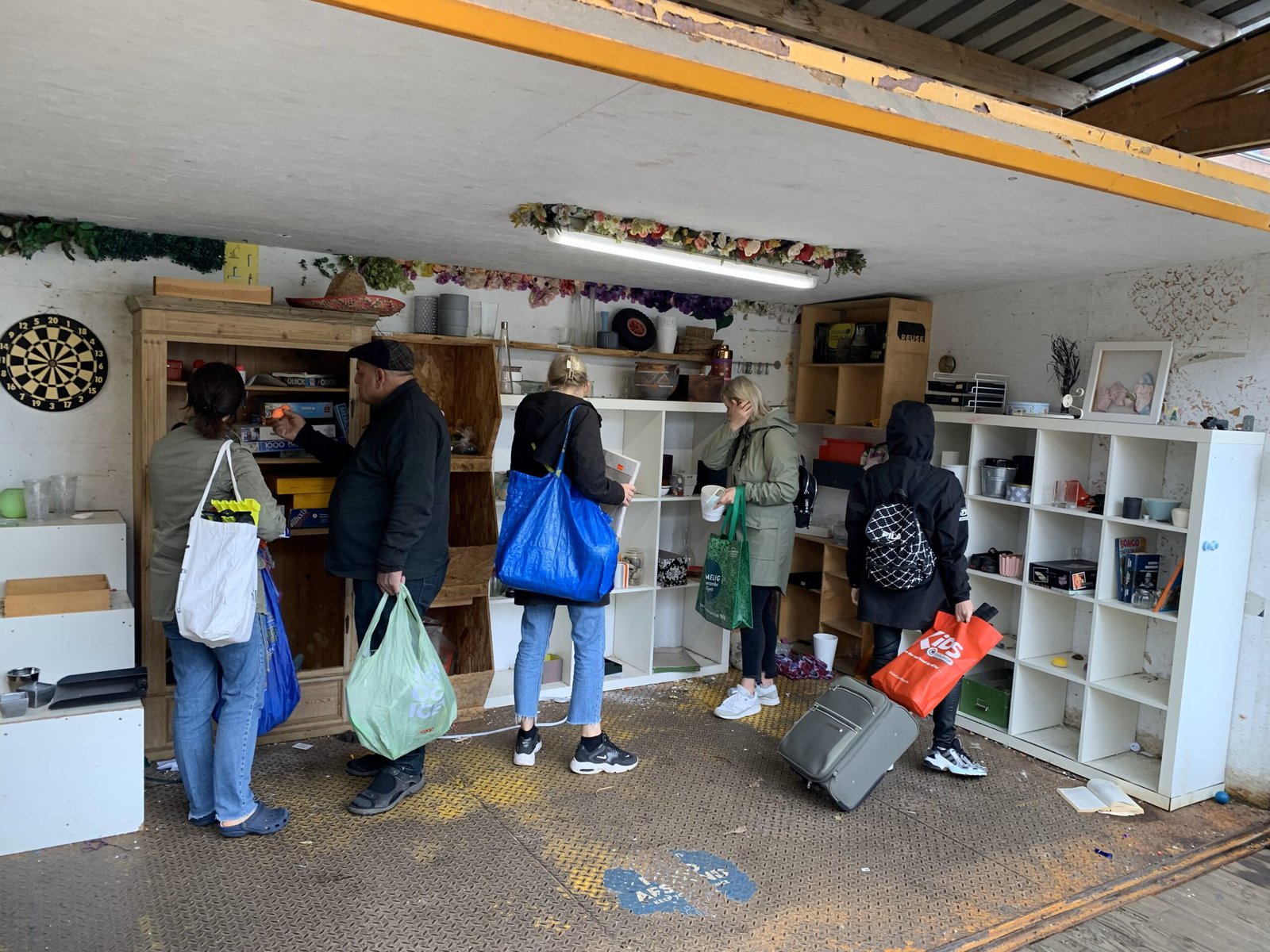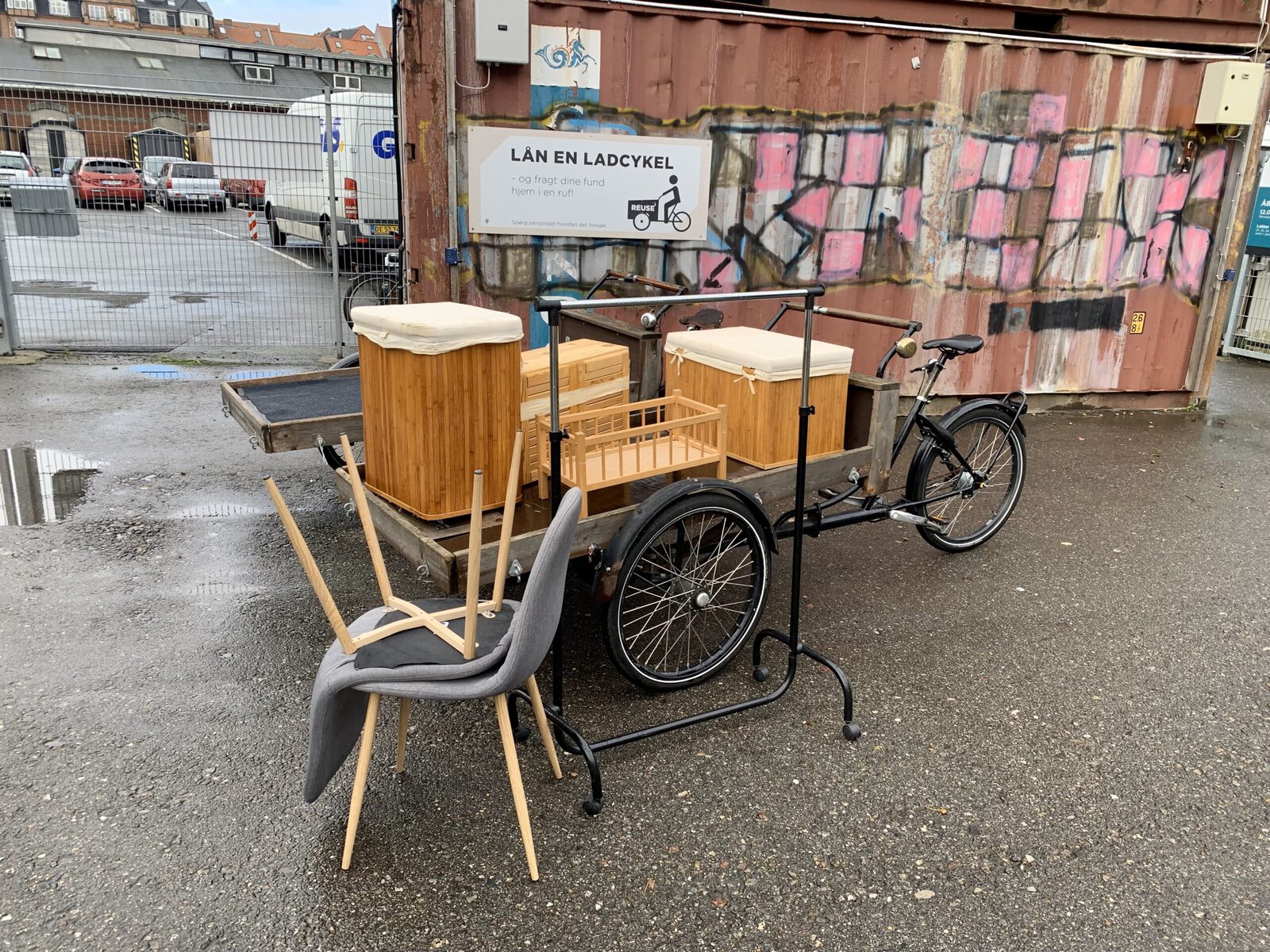
Everyday Sustainability: Aarhus’ Circular Economy Centers
Every morning, about 50 to 100 people gather in line in front of a center owned by the municipality of Aarhus, the second-largest city in Denmark. Here, they can give — and take — all sorts of materials for free. More than two metric tons of objects pass through the center per day, from sofas to dishes, lamps to wardrobes, electronic devices to tables, all of which can be brought to new homes via cargo bikes the city lends to citizens.
The Reuse Center: A Sustainable Solution
The project started in 2015 when Kredsløb, a company owned by the city, noticed how much the citizens of Aarhus were throwing away. To solve this problem, they created a center called Reuse, explains Peter Christensen, its coordinator: a reimagined recycling station where goods can be taken for free.

Denmark’s Commitment to Sustainability
Denmark is known for its green policies and efforts to create a circular economy, in which “nothing becomes waste and the intrinsic value of products and materials are retained,” as defined by the Ellen MacArthur Foundation. It was ranked first in the 2022 Environmental Performance Index, and cities in the country are working on plans to become climate neutral. As part of one such plan, Aarhus has developed a waste strategy that will ultimately include seven material exchange centers placed inside recycling stations across the city, of which Reuse is the first.
The Value of Reused Furniture
“You take something that wasn’t worth anything and add value to it just by picking it up. This idea is maybe the key or the cornerstone of what Reuse is to me,” explains Lasse Andersen, a Reuse regular of about four years.

Expanding the Circular Economy Centers
Taking into account the success of the pioneer center, Aarhus is now investing in its next step: creating other centers in the city’s recycling stations so that the initiative becomes more local — and circular. Thus, the things donated by the community of a certain neighborhood will stay inside that area, explains Sofie Schousboe Laursen, who manages the project.
According to Laursen, this is why the city is actually planning to close the first center, which requires containers with goods from the surrounding recycling stations to be be transported on an approximately daily basis: “We
SDGs, Targets, and Indicators Analysis
1. Which SDGs are addressed or connected to the issues highlighted in the article?
- SDG 11: Sustainable Cities and Communities
- SDG 12: Responsible Consumption and Production
The article discusses the initiatives taken by the city of Aarhus in Denmark to promote a circular economy, reduce waste, and encourage reuse. These efforts align with SDG 11, which aims to make cities inclusive, safe, resilient, and sustainable. Additionally, the focus on reusing materials and reducing consumption connects to SDG 12, which promotes responsible consumption and production patterns.
2. What specific targets under those SDGs can be identified based on the article’s content?
- SDG 11.6: By 2030, reduce the adverse per capita environmental impact of cities, including by paying special attention to air quality, municipal and other waste management.
- SDG 12.5: By 2030, substantially reduce waste generation through prevention, reduction, recycling, and reuse.
The article highlights the efforts of Aarhus to reduce waste and promote reuse through its material exchange centers. These initiatives contribute to achieving SDG 11.6 by improving waste management practices and reducing the environmental impact of cities. They also align with SDG 12.5 by focusing on waste prevention, reduction, recycling, and reuse.
3. Are there any indicators mentioned or implied in the article that can be used to measure progress towards the identified targets?
- Amount of materials passing through the exchange centers per day
- Number of citizens participating in the exchange centers
- Percentage of recycled materials used in the construction of recycling stations
- Number of new material exchange centers opened in the city
- Percentage reduction in waste generation
The article mentions that more than two metric tons of objects pass through the material exchange center in Aarhus per day. This can be used as an indicator to measure the amount of materials being reused and diverted from waste. The number of citizens participating in the exchange centers can also be tracked to assess the level of community engagement.
Additionally, the article mentions that the recycling stations in Aarhus are made with around 70 percent recycled material. This can serve as an indicator to measure the percentage of recycled materials used in the construction of infrastructure.
The article also states that Aarhus plans to open new material exchange centers in the city, indicating that the number of centers can be tracked as an indicator of progress.
Finally, the overall reduction in waste generation can be measured to assess the effectiveness of the initiatives in achieving SDG 12.5.
Table: SDGs, Targets, and Indicators
| SDGs | Targets | Indicators |
|---|---|---|
| SDG 11: Sustainable Cities and Communities | 11.6: By 2030, reduce the adverse per capita environmental impact of cities, including by paying special attention to air quality, municipal and other waste management. |
|
| SDG 12: Responsible Consumption and Production | 12.5: By 2030, substantially reduce waste generation through prevention, reduction, recycling, and reuse. |
|
Behold! This splendid article springs forth from the wellspring of knowledge, shaped by a wondrous proprietary AI technology that delved into a vast ocean of data, illuminating the path towards the Sustainable Development Goals. Remember that all rights are reserved by SDG Investors LLC, empowering us to champion progress together.
Source: reasonstobecheerful.world

Join us, as fellow seekers of change, on a transformative journey at https://sdgtalks.ai/welcome, where you can become a member and actively contribute to shaping a brighter future.






